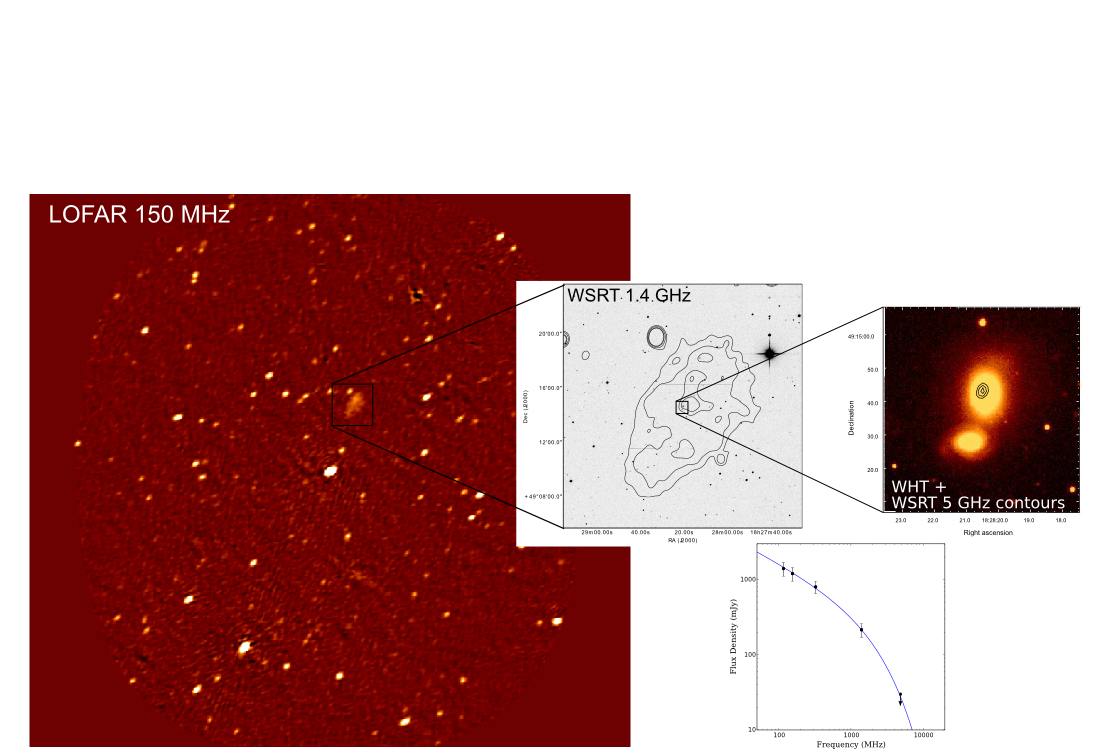Daily Image
13-10-2015Remnant radio galaxies in the LOFAR sky
| Submitter: | Marisa Brienza |
| Description: | The active phase of the radio AGN can last several tens of Myr after which the nuclear activity stops and the source starts to fade away. In this period, that we term the "remnant" phase, the core and the jets disappear and only low-surface brightness lobes remain visible radiating their energy away. The spectral study of this ageing plasma is of undoubted importance if we want to constrain the timescale of activity of radio galaxies. Because of preferential cooling of high-energy electrons, the synchrotron spectrum of ageing plasma develops an exponential break at high frequency. The particles also suffer adiabatic losses, which can cause the fossil lobes to fade rapidly. This makes remnant AGNs very rare and difficult to identify and therefore their luminosity evolution remains largely unconstrained. Thanks to its high sensitivity at MHz-frequency and the variety of spatial resolutions, LOFAR has initiated a new era in the search for these objects. BLOB1 is a 700-kpc remnant radio galaxy that we serendipitously discovered with LOFAR at 150 MHz. By combining LOFAR data with follow-up Westerbork observations and archival data at higher frequencies we investigated the source morphology and the spectral properties from 116 to 4850 MHz. Our analysis suggests that the nuclear engine is currently switched off or, at most, active at a very low-power state. The host galaxy (z=0.051) is interestingly located outside a cluster and it is currently interacting with a companion galaxy. This interaction may have played a role in triggering and/or shut down the radio jets. Unlike the majority of the previously identified remnant sources, BLOB1 does not have a very steep spectrum at low frequency. This result has also significant implications in the systematic selection of remnants AGNs in the LOFAR Tier-1 survey that we are now starting. You can read more details about these findings in a paper now accepted for publication in Astronomy & Astrophysics: "LOFAR discovery of a 700-kpc remnant radio galaxy at low redshift" by M. Brienza, L. Godfrey, R. Morganti et al. (as part of the LOFAR survey KSP) |
| Copyright: | ASTRON - LOFAR |
| Tweet |  |
